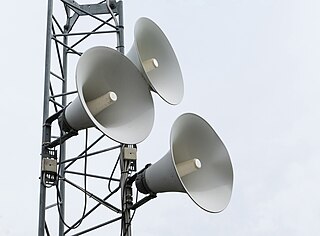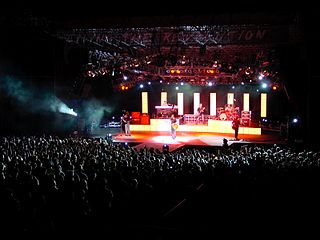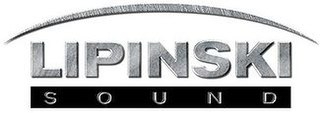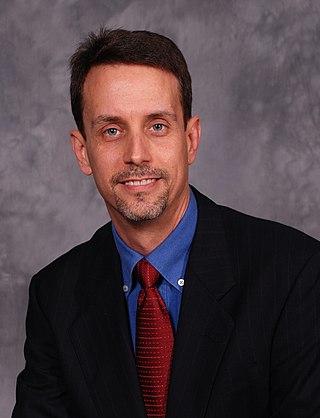
A subwoofer is a loudspeaker designed to reproduce low-pitched audio frequencies, known as bass and sub-bass, that are lower in frequency than those which can be (optimally) generated by a woofer. The typical frequency range that is covered by a subwoofer is about 20–200 Hz for consumer products, below 100 Hz for professional live sound, and below 80 Hz in THX-certified systems. Thus, one or more subwoofers are important for high-quality sound reproduction as they are responsible for the lowest two to three octaves of the ten octaves that are audible. This very low-frequency (VLF) range reproduces the natural fundamental tones of the bass drum, electric bass, double bass, grand piano, contrabassoon, tuba, in addition to thunder, gunshots, explosions, etc.

A loudspeaker is a combination of one or more speaker drivers, an enclosure, and electrical connections. The speaker driver is an electroacoustic transducer that converts an electrical audio signal into a corresponding sound.
Bose Corporation is an American manufacturing company that predominantly sells audio equipment. The company was established by Amar Bose in 1964 and is based in Framingham, Massachusetts. It is best known for its home audio systems and speakers, noise-canceling headphones, professional audio products, and automobile sound systems. Bose has a reputation for being certainly protective of its patents, trademarks and brands. The majority owner of Bose Corporation is the Massachusetts Institute of Technology. Non-voting shares were donated to MIT by founder Amar Bose and receive cash dividends. The company's annual report for the 2021 financial year stated that Bose Corporation's yearly sales were $3.2 billion, and the company employed about 7,000 people.

A public address system is an electronic system comprising microphones, amplifiers, loudspeakers, and related equipment. It increases the apparent volume (loudness) of a human voice, musical instrument, or other acoustic sound source or recorded sound or music. PA systems are used in any public venue that requires that an announcer, performer, etc. be sufficiently audible at a distance or over a large area. Typical applications include sports stadiums, public transportation vehicles and facilities, and live or recorded music venues and events. A PA system may include multiple microphones or other sound sources, a mixing console to combine and modify multiple sources, and multiple amplifiers and loudspeakers for louder volume or wider distribution.

A sound reinforcement system is the combination of microphones, signal processors, amplifiers, and loudspeakers in enclosures all controlled by a mixing console that makes live or pre-recorded sounds louder and may also distribute those sounds to a larger or more distant audience. In many situations, a sound reinforcement system is also used to enhance or alter the sound of the sources on the stage, typically by using electronic effects, such as reverb, as opposed to simply amplifying the sources unaltered.

A horn loudspeaker is a loudspeaker or loudspeaker element which uses an acoustic horn to increase the overall efficiency of the driving element(s). A common form (right) consists of a compression driver which produces sound waves with a small metal diaphragm vibrated by an electromagnet, attached to a horn, a flaring duct to conduct the sound waves to the open air. Another type is a woofer driver mounted in a loudspeaker enclosure which is divided by internal partitions to form a zigzag flaring duct which functions as a horn; this type is called a folded horn speaker. The horn serves to improve the coupling efficiency between the speaker driver and the air. The horn can be thought of as an "acoustic transformer" that provides impedance matching between the relatively dense diaphragm material and the less-dense air. The result is greater acoustic output power from a given driver.
Klipsch Audio Technologies is an American loudspeaker company based in Indianapolis, Indiana. Founded in Hope, Arkansas, in 1946 as 'Klipsch and Associates' by Paul W. Klipsch, the company produces loudspeaker drivers and enclosures, as well as complete loudspeakers for high-end, high-fidelity sound systems, public address applications, and personal computers.

MartinLogan (ML) is a Canadian/US company producing conventional subwoofer speakers as well as floor-standing, wall-mounted, and in-wall hybrid speakers using electrostatic loudspeaker and planar magnetic thin film loudspeaker technology.

Eminent Technology is an American audio electronics company based in Florida, established in 1983 by Bruce Thigpen. Their first product was an air bearing straight-line tracking tonearm for phonograph playback, and was the first implementation of a captured air bearing for tonearm use. It was followed by a more advanced version of the tonearm.

NHT Loudspeakers, often colloquially referred to as NHT Audio, is an American loudspeaker and audio component company based in Benicia, California. The company was founded by Chris Byrne and Ken Kantor in December 1986.

Meyer Sound Laboratories is an American company based in Berkeley, California that manufactures self-powered loudspeakers, multichannel audio show control systems, electroacoustic architecture, and audio analysis tools for the professional sound reinforcement, fixed installation, and sound recording industries.

Polk Audio, Inc. is an American manufacturer of audio products best known for its home and automobile speakers. The company also produces a wide range of other audio products, such as amplifiers and FM tuners. The company's headquarters is in San Diego, California. In 2006, it was bought by Directed Electronics. Polk Audio has also introduced smart speakers for Google Assistant and Amazon Alexa.

Lipinski Sound is a professional market and audiophile oriented manufacturer of loudspeakers, subwoofers, powered speaker stands, surround sound systems, power amplifiers, microphones, and microphone preamplifiers. It is based in San Francisco and Warsaw.

JL Audio is an American manufacturer of consumer audio products. Known as one of the pioneers of the car audio industry, it manufactures marine, home, and mobile audio products, but are best known for their subwoofers.
Crown International, or Crown Audio, is an American manufacturer of audio electronics, and is a subsidiary of Harman International Industries, which has been part of South Korea-based Samsung Electronics since 2017. Today, the company is known primarily for its power amplifiers, but has also manufactured microphones, loudspeakers, and a line of commercial audio products, as well as digital audio networking products.
KEF is a British company specialising in the design and production of a range of high-end audio products, including HiFi speakers, subwoofers, architecture speakers, wireless speakers, and headphones. It was founded in Maidstone, Kent, in 1961 by a BBC engineer named Raymond Cooke (1925–1995). In 1992, the Hong Kong–based Gold Peak Group acquired KEF; and GP Acoustics, a member of Gold Peak, now owns the company. KEF continues to develop and manufacture its products in Maidstone.

David W. Gunness is an American audio engineer, electrical engineer and inventor. He is known for his work on loudspeaker design, especially high-output professional horn loudspeakers for public address, studio, theater, nightclub, concert and touring uses.

Charles Emory Hughes II is an American inventor and audio engineer. He is known for his work on loudspeaker design, and the measurement of professional audio sound systems. Hughes first worked for Peavey Electronics designing loudspeakers and horns where he was granted a patent for the Quadratic-Throat Waveguide horn used in concert loudspeakers. He worked for Altec Lansing for two years as chief engineer for the pro audio division and was granted two more patents. In 2021, Hughes was hired by Biamp as principal engineer.
Thomas J. Danley is an American audio engineer, electrical engineer and inventor, the holder of multiple patents for audio transducers, especially high-linearity, high-output professional horn loudspeaker systems. Danley first gained notice in the 1980s with his novel servomotor-driven subwoofer systems used to reproduce very low frequencies in concert tours and theme parks. In 2000 he advanced the implementation of multiple-entry horns in 2000 with several designs led by the SPL-td1, a seven-driver loudspeaker. In 2005, he started a new company, Danley Sound Labs, through which he patented further technologies and produced a wide variety of loudspeaker models based on these technologies.













